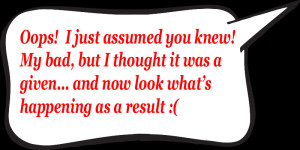 A previous post discussed the importance of headlines (and titles); your first impression to strangers, your millisecond chance to catch interest before the audience bolts.
A previous post discussed the importance of headlines (and titles); your first impression to strangers, your millisecond chance to catch interest before the audience bolts.
So what are the 4 most powerful words, in any language, that research tells us are the most powerful, effective and persuasive in whatever formula you choose to use in headlines?? These words rank highest in power and persuasiveness because they speak to our basic needs and interests as human beings, no matter our culture. They are Mother Nature’s words and should be added to any headline to give it extra zing. The words are: FREE, YOU, NEW and HOW
So let’s look at each important word separately to give it proper due. I’ll start with FREE this post. Using free will deliver more attention than any other word, hands down. Why? Because free has an ingrained appeal that we are gaining an advantage, and we are competitive creatures. Additionally we hate to miss out on anything (called loss aversion) so we pay attention when anything free is offered our way. Even when we don’t necessary want the item, we still stop to consider it, telling ourselves “Hey why not – it’s free!”
But watch out for the many kinds of free that are out there. Free can have a variety of connotations. All “free”s are not equal.
I was recently at a conference where the keynote speaker, John Eckman, CEO of 10up, spoke about 3 versions of “free”:
Free as in Beer
Free as in Speech
Free as in Puppy
And I would add: Free as in Lunch
Free as in Beer – it’s really free, a small inconsequential item, like a beer, a stick of gum, or in the old days, bumming a cigarette. No big deal to give or get.
Free as in Speech – or as in Liberty, it’s inherent, but needs to be usable to be appreciated. In this sense of free, knowledge and ability to utilize is key, or it’s unneeded and will be wasted or refused.
Free as in Puppy – no actual cost now, but there are costs down the road – food, vet bills, time requirements – so there are responsibilities attached to accepting the free item, that expend resources.
Free as in Lunch – (and there’s no such thing as a free lunch) a more consequential free item offering, but there are with mental strings attached that kick in reciprocity; when accepted it’s a known favor and you will owe the giver, even with claims of being truly free with no strings attached (ha!).
All these nuances of free are part and parcel of the real meaning behind giving and accepting something as free. So the next time you are drawn in to something that claims to be free, ask yourself which is the real understanding behind the free; which “Free as in…” is it?
Next time the topic is: the power of the word YOU – how Mother Nature’s word lands in our brain.
Comment below – What are you offering for free? Or what have you accepted that was truly free?








